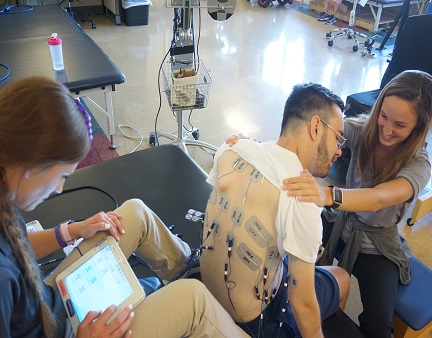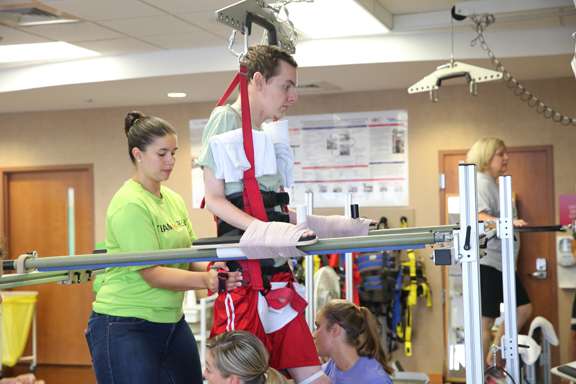| Testosterone Replacement Therapy in Combination with Electrical Stimulation and Standing: Effect on Muscle and Bone in Spinal Cord Injured Males
The aim of this study is to understand what happens to muscle and bone in spinal cord injured males after 20 weeks (5 months) of training using stand training with or without testosterone replacement therapy (TRT) in the form of a gel containing testosterone and electrical stimulation (ES). The research participants will be randomly assigned to one of the four training groups based upon age, time since injury, and level of injury. Participants will not know if they are receiving the testosterone or the placebo gel. The placebo gel contains no testosterone.
Assessments to evaluate TRT safety, training effects, and/or optimize training parameters are conducted before, periodically throughout the training, after the 20 weeks of training, and at a 3-month follow-up. Learn more details about this study. Activity-Dependent Rehabilitation Model to Improve Bone and muscle after SCI: Stand Retraining and Neuromuscular Electrical Stimulation The main purpose of this study is to understand what happens to muscle and bone after five to seven months of training using stand training and neuromuscular electrical stimulation (NMES). The research participants will be randomly assigned to one of the following three training programs: (i) stand training, (ii) NMES training, (iii) Stand training with NMES.
The research participants enrolled in this study train 4 to 5 days per week for at least 80 sessions.
Assessments to evaluate training effects and/or optimize training parameters are conducted before, periodically throughout the training, after the 80 training sessions, and at a 3-month follow-up.
|
|






